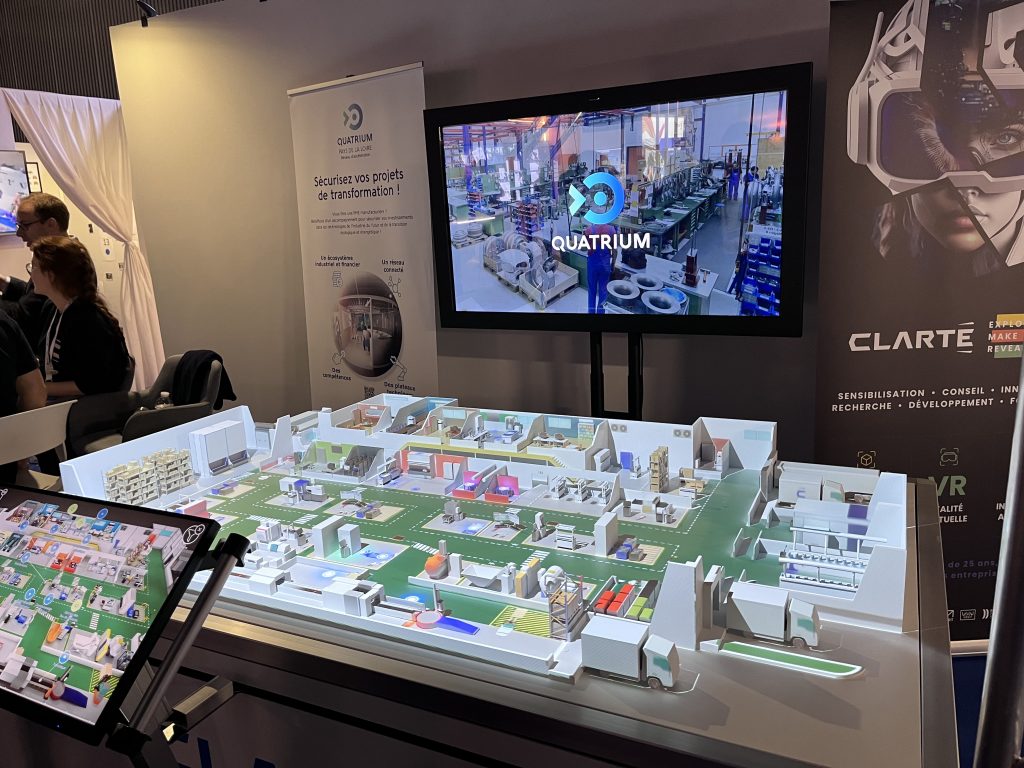Last week, the first Autodesk Forma hackathon was organized.
Charles and I had already met some folks from the Forma team during DevCon 2023 in Munich, and then again during AU in Las Vegas. We were encouraged to test Forma as developers and were asked to try creating extensions and provide feedback on the SDK.
Unfortunately, we were very busy with our daily work towards the end of the year and did not have time to delve into this product.
This event provided a real opportunity for us to dedicate time to Forma with the assistance of the engineering team.
The event kicked off at 9 am, and we were then all invited to pitch our ideas. Ours was quite simple – “Make Augmented Reality from Forma”.

After some discussions with familiar Autodesk faces, we began our work.
A few days before the event, I started reading the documentation and discovered from one of the examples that we were able to get triangles from the elements. That was our starting point, but after some discussions with the engineering team, they convinced us to use the Forma API – which allowed us to access the data without using an extension – and thus without opening the Forma web page.

We decided to give it a try and began making API requests to extract Forma data. Unfortunately, we quickly realized that this API was still new and needed some tips/hacks to obtain certain values.
Our biggest challenge, however, was not only competing against great teams but also against time. While we could accomplish a lot in two days, with introductions, breaks, discussions, setup, and preparation of materials for the presentation, we realistically only had about 5-10 hours of actual coding time.
Discovering the API, parsing responses, and creating recursive functions is not very complicated but can be quite time-consuming. In this case, we were not sure if we would be able to achieve our goals by the end.
Returning to our initial approach, we quickly set up a Forma extension, and with a few lines of code, we were able to retrieve the geometry of our buildings. With a basic websocket server, we could then send this data to other clients.
Next, we created a fresh Unity project – our game engine of choice for easily prototyping and developing AR apps – and added a websocket client to receive our data.

Unity is very useful for creating augmented reality apps. With the help of the ARFoundation package, we only needed to drag the necessary components into the scene to have an AR app that we could deploy on our iPad.
Now came the trickiest part: model placement. Usually, we work with markers or detected plane intersections to establish a real-world origin. However, for this example, we decided to use geolocation (the accuracy should be sufficient for this use case).
This part involved two different steps:
- Converting the GPS coordinates of the model to placed and the device to Cartesian coordinates.
- Finding the true north of the device to orient the model.
Because we were working inside the building, we did not have easy access to the outdoors, and our GPS data were not perfect. Also, due to the time limit, we streamlined this process a bit and assumed the orientation, for example, by placing the device in the right position at launch.

In any case, our presentation and work impressed the judges, and we were one of the three winners (which was amusing for us as we weren’t sure if we would even compete!).

Our source code is publicly available here: https://github.com/Piro-CIE/forma-hackathon
Our presentation slides are also available here: https://1drv.ms/p/s!Anrq2_ANoVNNjP0QKUYY9PdwVxhapQ?e=2Ijl0o
We concluded the hackathon with a drink and took the opportunity to have further discussions.
Thank you to all the Forma team for organizing this event. We were very pleased to participate in this hackathon and would like to express special thanks Daniel and Håvard.
We were also happy to see Kean, Petr and Denis. I took the opportunity to chat with them about some APS-related questions.

Our return flight was on Thursday evening, so we had some time to visit Oslo.

We found a boat leaving just 10 minutes later for a 2-hour cruise, which was a great opportunity to see Oslo’s surroundings and gain a different perspective.



As avid lovers of French cuisine, we were a little disappointed to limit ourselves to Norwegian food such as pizza and sushi, so we sought out a local meal. We found a great restaurant focused on seafood.

It was already time to fly back to Nantes and return to our projects.





















